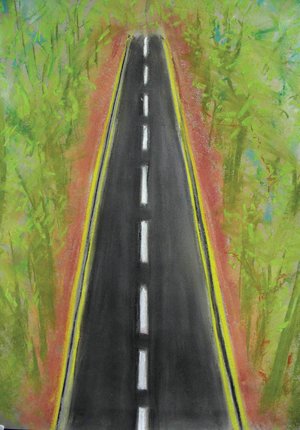Following the success of ‘Singing on prescription’, Hilary Bungay explains how other artforms are getting involved

At the Sidney de Haan Research Centre, we are committed to bringing ‘Singing on Prescription’ into mainstream healthcare. We have been gathering evidence and conducting research to demonstrate the benefits of group singing for a range of people including older people, those with mental health problems, breathing problems and Parkinson’s disease. Recently, in recognition that singing is not for everyone, we have started to look at ‘Arts on Prescription’ (AoP) as a model which offers a wider variety of creative activities. When something is prescribed for an individual it suggests that it has the potential to improve their health and well-being. AoP involves a referral process whereby health and social care practitioners prescribe creative activities for people who are unwell. People who may be referred to AoP include those recovering from mental ill health and people who have mild anxiety and depression.
The use of arts activities in the field of mental health is not new; indeed, the use of creative activities in psychiatric hospitals dates back to the Age of Enlightenment, when the Moral Treatment Movement challenged society’s beliefs about the mentally ill and advocated the use of literature, music, physical exercise and work as a way of healing emotional stress. Since the early twentieth century, healthcare professionals have become increasingly interested in the role that the arts may play in helping people to adapt to or recover from mental ill health. There is now a growing body of evidence that supports the notion that active involvement in creative activities can provide a wide range of benefits, including the promotion of well-being and quality of life, and also have a positive impact on mental health and social inclusion for people with enduring mental health difficulties.
The number of AoP programmes operating in the UK has grown steadily, funded through sources such as Primary Care Trusts, Mental Health Trusts and charitable organisations. The important features of AoP are that the activities are participatory – people get involved and engage in an activity, and it is the doing and being that are the essence of the recovery process. There is no standard model for AoP. Sessions are facilitated by artists or musicians and engage small groups of people in a community setting, and so differ from Art Therapy which is delivered as psychotherapy by art therapists. The range of activities offered varies but include the visual arts, dance, singing, photography, sculpture, floristry, pottery, creative writing and reading groups. However, not all programmes call themselves ‘arts on prescription’, and this may be significant as some people think the ‘arts’ are high brow and not for them. When we recently conducted a market research exercise asking people what they thought was meant by ‘arts on prescription’, while most recognised that being prescribed something meant it was for health, the term ‘arts’ was more difficult with many people thinking of the ‘arts’ as going to a gallery to look at pictures, or being in an audience watching a performance rather than being something they could do for themselves.
Getting funding for AoP programmes can be challenging, particularly in a time of economic restraint. Health commissioners require empirical evidence of therapeutic benefit before they will resource services. Whilst there is a substantial body of anecdotal literature from practitioners describing individual case studies there is little published quantitative data that focuses specifically on AoP. Some programmes do use measures that are recognised by health care providers and commissioners to evaluate the impact on individual participants, and reports are available on the individual websites. The difficulty that many of these programmes face is that they have insufficient funds to enable them to conduct the rigorous types of evaluation that commissioners regard as ‘hard’ evidence of effectiveness.
However, AoP programmes are community based, and with their inherent capability of promoting engagement and inclusion fit well with the recent government policy of shifting responsibility to the community level and the ideological shift from the ‘big state’ to the ‘big society’. Research demonstrates the value to participants through positively benefiting people with mental health problems, increasing levels of empowerment, and building social capital and social inclusion. These are important outcomes as people with mental health problems often withdraw from society and can become isolated. AoP can help draw people out through increasing their self-esteem and confidence, and through making new friends.
There is a role for artists to develop new programmes and activities which will engage people and stimulate their creativity. However, it is important that any AoP programme has input from appropriately trained health or social care professionals, who are trained in recognising psychological distress. This is because people with mental health problems are potentially vulnerable, and there are issues around safety for the individual participant, other participants and also the artist facilitators. Currently, some schemes do allow self-referral but require a letter from the general practitioner or another health professional to support the person’s inclusion. Most schemes do some form of base-line assessment – this is to ensure that AoP is a suitable option for the individual and also to identify whether medical intervention is also required. AoP is not an alternative to drug therapies but has much to offer with the potential to assist the recovery process for a relatively small cost.
Hilary Bungay is a Research Fellow at Sidney de Haan Research Centre for Arts and Health, Canterbury Christ Church University.



